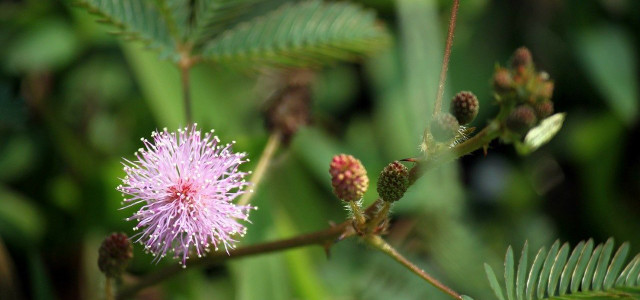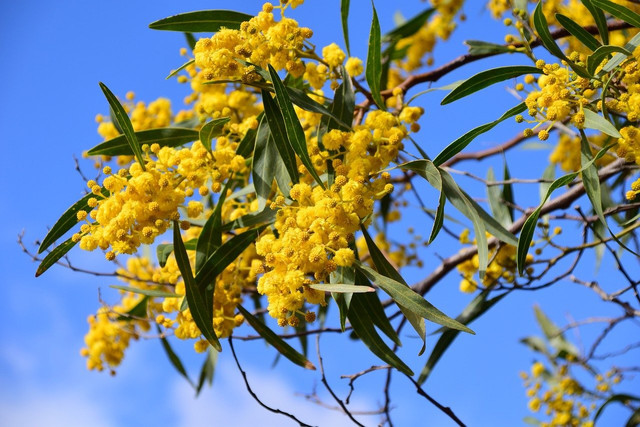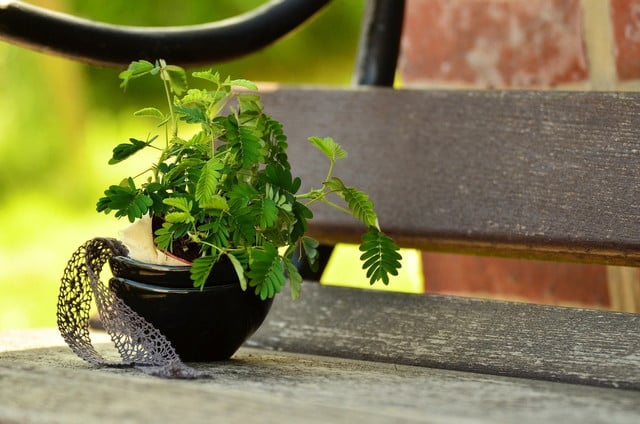
Planting a mimosa works best indoors, even if you have little experience in gardening. We’ll show you how it’s done and how to properly care for this tropical plant.
The mimosa is a tropical evergreen plant. There are about 500 species of the plant – among the best known is the Mimosa pudica, which is mainly used as an indoor plant in this country. The plant, which grows to a maximum height of 50 centimeters, owes its name to its leaves. When touched, these behave “mimosa-like” and contract. In English, the mimosa is therefore sometimes called the “touch-me-not” plant.
Did you know? Silver acacias are often called “false mimosa” because of their similarity to the true mimosa. However, they actually belong to the acacia genus, not the mimosa. They have yellow flowers.
Contents
The ideal place for the mimosa

Since mimosa originally comes from the tropics, they are very sensitive to frost. For this reason, they are mainly suitable for the apartment – but you can easily put them outside during the summer, for example, on the balcony, terrace or windowsill. However, it is not recommended to plant the mimosa in the garden, as it does not tolerate temperatures below ten degrees Celsius.
Before you plant a mimosa, you should look for a suitable location for it. This should meet the following characteristics:
- Mimosa likes it bright, but without direct sunlight. A window sill or a bright conservatory is very suitable.
- The temperature should be at least between 18 and 20 degrees Celsius.
- Find a sheltered place for your mimosa. Avoid places where people often walk by and possibly graze the mimosa. Folding its leaves when touched takes a lot out of the plant.
Planting mimosa: this is how to do it

You can buy mimosa in pots in garden centers and plant stores. In principle, you can leave the plant in the pot and soil for the time being, but it is recommended to repot it after purchase. Sometimes purchased plants are in poor quality soil, which is often contaminated with pests.
If you want to repot your mimosa after purchase, you will need a slightly larger planter, regular houseplant soil and some drainage material (for example, coarse gravel, a few shards of clay or expanded clay). Then proceed as follows:
- Free the mimosa from the pot. If the soil is already heavily rooted, it helps if you shake it gently. Then it can be loosened better.
- Then remove as much of the old soil as possible. If there are pests in the soil, they should be removed. If you wish, you can also rinse the roots with lukewarm water.
- Then take the new pot. Important: This should absolutely have drainage holes, otherwise there is a risk of waterlogging! Then add a small layer of your drainage material so that excess water can run off.
- Now add some substrate to the pot. Fill it about two-thirds full with soil.
- Then place the mimosa inside and hold it with one hand so that it stays upright. With the other hand, fill the pot to the top with soil.
- Press the soil down so that the mimosa stands on its own.
- Water the plant and place it in its designated spot.
Tip: Even if you decide not to put the mimosa in a new container and fresh soil right after purchase, you will need to repot it at some point. You can read more about this here: Repotting plants: general instructions and tips.
Care for mimosa properly

Mimosa is actually quite easy to care for. There are just a few things you should keep in mind when caring for the plant:
- Water your mimosa regularly, but not too much. You should avoid waterlogging at all costs, otherwise the roots will rot. Between watering, you can let the top two to three centimeters of soil dry out with good conscience.
- From time to time you can spray the mimosa with stale tap water to increase the humidity. If the humidity is very low, spider mites and aphids may appear. Otherwise, the plant is very hardy to pests.
- You can fertilize the mimosa every two to three weeks during the spring and summer. Just follow the instructions on the packaging of the fertilizer. You can also make your own fertilizer.
- You do not need to cut the mimosa.









